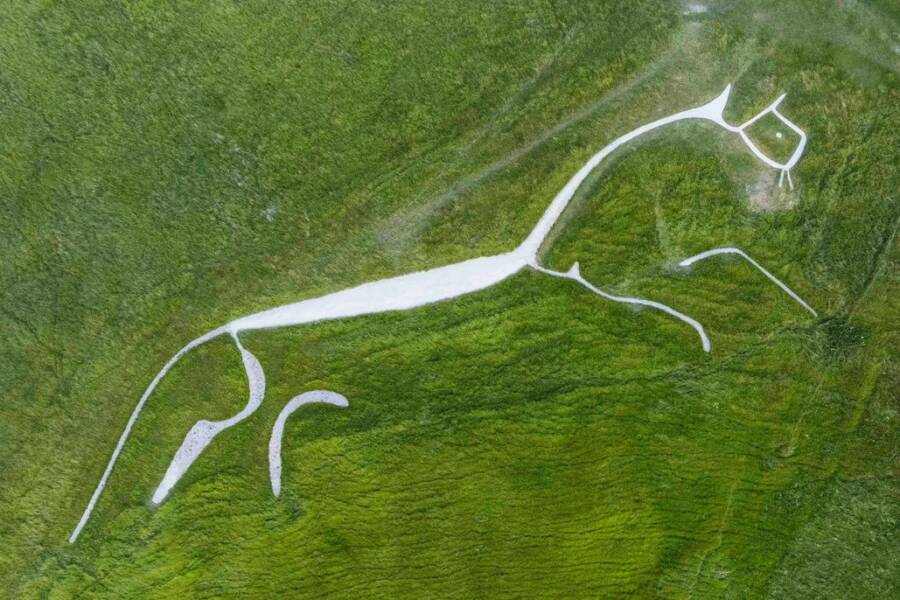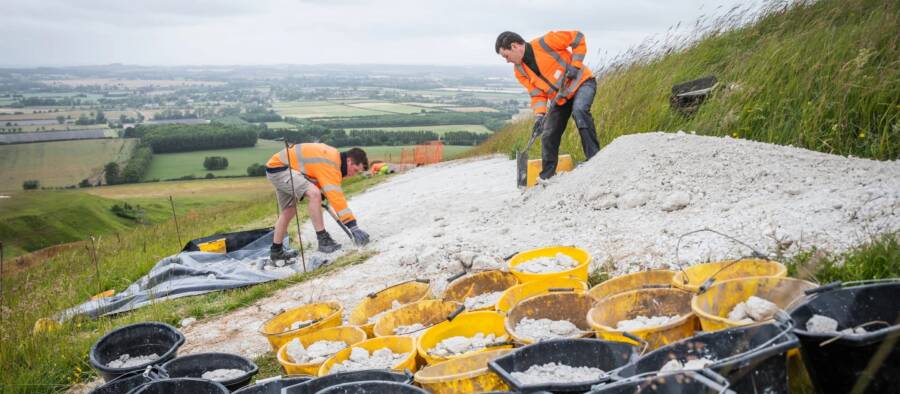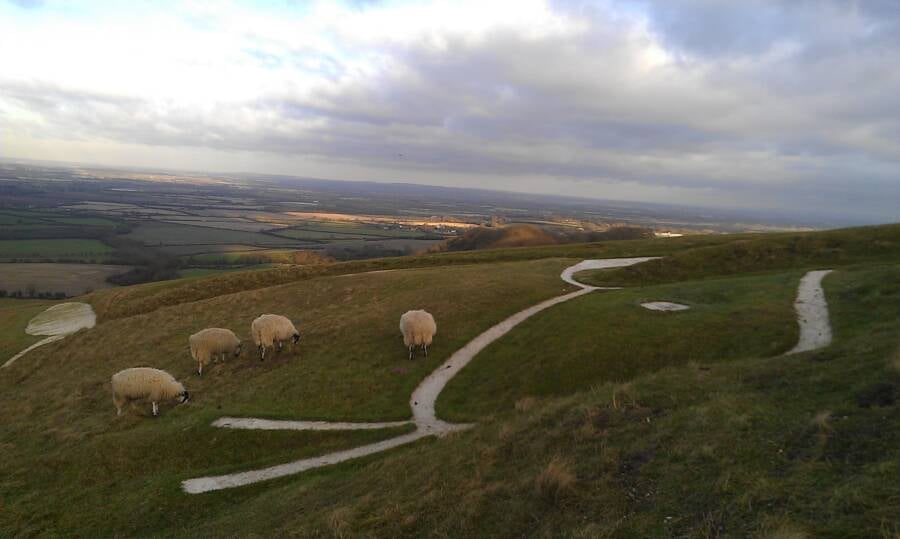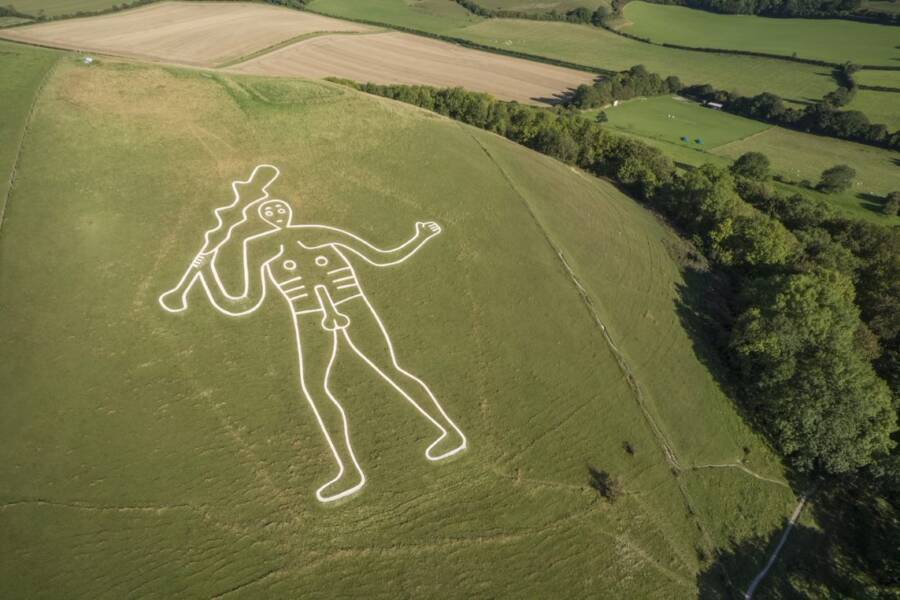After the Uffington White Horse suffered decades of shrinking and damage due to encroaching grass and topsoil, it has been restored like never before.

James Dobson/National Trust ImagesResearchers believe that the Uffington White Horse was created between 1380 and 210 B.C.E.
For thousands of years, a massive chalk figure has sat upon White Horse Hill in Oxfordshire, England. The so-called Uffington White Horse is thought to be Britain’s oldest chalk figure, and when a survey in 2023 revealed that it was shrinking, archaeologists sprang into action.
Not only has the mysterious figure now been restored to its former glory, but archaeologists are also hopeful to use new technology to more accurately pinpoint the date of its mysterious creation some 2,200-3,800 years ago.
Restoring The Uffington White Horse
According to Oxford Archaeology — who oversaw the restoration in partnership with the National Trust — people living near the Uffington White Horse were the first to notice that the famous chalk figure was growing less distinct. Surveys in 2022 and 2023 confirmed their suspicion: the horse had shrunk by as much as 40 percent.

James Dobson/National Trust ImagesOxford Archaeology and the National Trust worked together to restore the chalk figure, which is some 3,000 years old.
In 2024, the restoration project began.
Archaeologists worked on the entire 364-foot figure with a special focus on its neck and head, which had narrowed to less than half of their typical width over the past several years. They cut back turf which had encroached on the figure, and redistributed the top layer of chalk.
During the course of the restoration, archaeologists also took new soil samples. The Uffington White Horse was dated to between 1380 and 210 B.C.E – the late Bronze Age or Iron Age — in the 1990s, but new technology might provide a clearer picture of its origins.

James Dobson/National Trust ImagesThe neck and head of the Uffington White Horse had narrowed to less than half of their former width.
Indeed, many questions still remain about the Uffington White Horse, and British chalk figures like it.
Britain’s Mysterious Chalk Figures

Ethan Doyle White/Wikimedia CommonsThe head of the horse, surrounded by grazing sheep.
According to Oxford Archaeology, the Uffington White Horse was created thousands of years ago by ancient people who carefully carved “segmented chalk trenches into the upper slopes of the hill.” As the centuries passed, the chalk figure was tended by locals who ensured that it didn’t disappear.
“[T]he White Horse owes its survival to the local communities who have regularly been maintaining it over perhaps a hundred generations,” Oxford Archaeology explained. “In fact, the Horse could easily disappear if left untouched for a decade or more.”
However, the original purpose of the Uffington White Horse remains a mystery. It may have been a territorial marker or a fertility symbol. And it may not be a horse at all. It’s also possible that the figure is meant to represent a dragon, as it’s located near Dragon Hill where legend states that St. George once slayed a dragon.
Moreover, the horse belongs to a larger legacy of ancient British chalk figures. These include the Westbury White Horse, the Long Man of Wilmington, and, perhaps most famously, the Cerne Abbas Giant.

National Trust ArcheologyThe Cerne Abbas Giant is more recent than the Uffington White Horse and might have been created either in protest of Oliver Cromwell or the construction of a 10th-century abbey.
The soil samples taken during restoration of the Uffington White Horse may offer a better idea of its origins, which in turn may help explain why it was created. Until then, it and chalk figures like it belong to a long and international tradition of giant carvings.
Like the Orinoco rock carvings in South America or Peru’s famous Nazca Lines, they clearly served some purpose to ancient people. And while we may not understand them today, we can still be awed by them.
After reading about the restoration of the Uffington White Horse, discover the story of the Druids, the ancient Celtic priests who acted as teachers, judges, and priests in ancient Britain and Gaul. Then, learn about the Picts, the fierce Scottish warriors who held of the ancient Romans.





